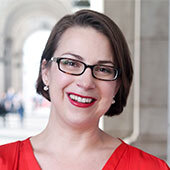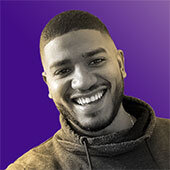What were our original career plans?
Amy: I saw myself taking an academic route. I was a nerdy kid who liked school and enjoyed reading and didn’t mind homework all that much. I attended the University of Kent in Canterbury, England, for graduate school and planned to earn my PhD eventually.
Ruben: I always liked studying the anatomy and physiology of the human body and used to say I was going to be a great doctor. At the age of 17, after I graduated from high school, my parents decided to move our family from the Dominican Republic to the United States. After several months in the United States, I started finding out what it would take to become a doctor in the US. I was stunned by everything I would have to do and all the academic requirements I would have to meet—and I was in the middle of learning English. My dreams of becoming a doctor fell apart.
How did each of us decide to change to a different field?
Amy: I was working in the Public Relations office at the Folger Shakespeare Library, which is the world’s largest collection of Shakespeare materials. The Library had an opportunity to collaborate with Oxford University and other institutions for a joint exhibition called Manifold Greatness, celebrating the 400th anniversary of the printing of the King James Bible. I was part of the team who worked on creating the blog and Web site that accompanied that exhibition. I was heavily involved in developing online content for various audiences and working with visual designers to create the site’s look and feel. It was all about information architecture, content strategy, and persona research—in other words, all about the user experience. But the team didn’t refer to the work using those terms.
After working on Manifold Greatness, I was hooked. I wanted to understand more about what went into creating amazing online experiences. So I started looking at every aspect of what went into digital ecosystems—not just the content.
Ruben: I decided to take an admissions exam at a college of technology, and I passed! Since I had always been a very artistic boy and liked to paint and draw, I chose Digital Media Arts as my major. That is how my career as a graphic designer began. I started working in New York City with well-known design agencies, and I fell completely in love with the field of design.

